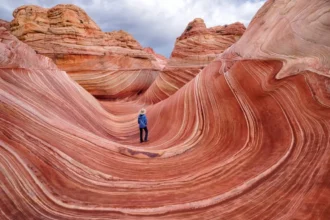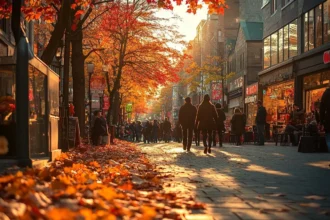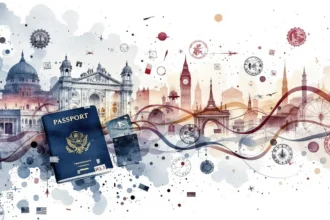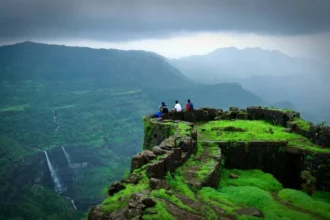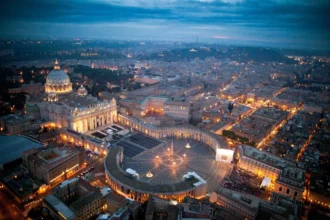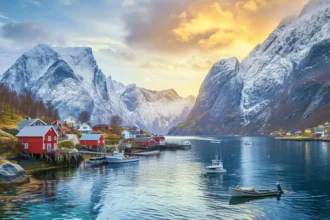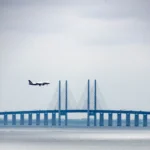There’s a place where mountains shoot straight out of the sea, where the midnight sun glows at 2 a.m. and the northern lights dance without warning. Fishermen’s cabins dot the coastline like faded postcards, and time seems to bow in reverence to nature. Welcome to the Lofoten Islands, Norway’s wild Arctic archipelago where rugged meets romantic, and isolation feels like intimacy.
If there were ever a destination that looked like it was sculpted by Viking gods and kissed by poets, this is it.
Where Are the Lofoten Islands?
Tucked above the Arctic Circle in northern Norway, the Lofoten archipelago stretches out like a dragon’s tail into the Norwegian Sea. It’s remote, yes — but not unreachable.
And it’s that very distance that protects its charm.
Lofoten islands are made up of several main islands connected by bridges and undersea tunnels: Austvågøya, Vestvågøya, Flakstadøya, and Moskenesøya — each one wrapped in fjords, jagged peaks, and sea spray.
What Makes Lofoten So Magical?
Nature’s Drama, Everywhere You Look in Lofoten Islands
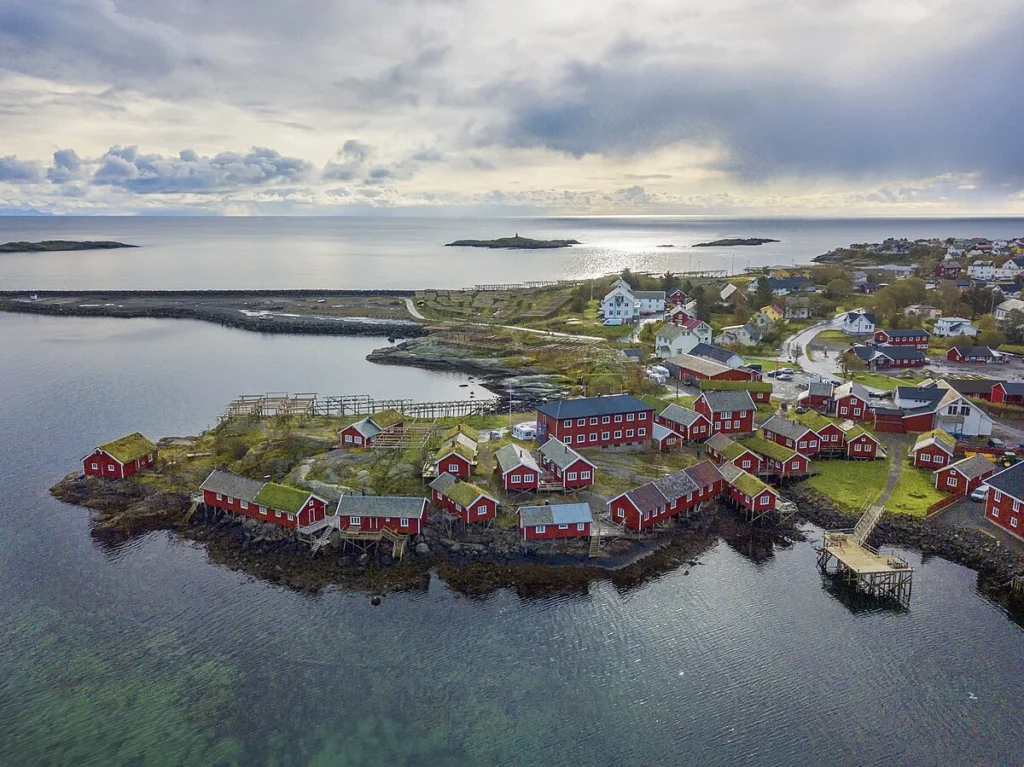
Lofoten islands doesn’t do subtle. It does towering granite peaks rising from the sea. Fjords so deep they mirror your soul. Villages with red stilted cabins (rorbuer) clinging to rock edges like memories.
Even your drive through the islands is like cruising through a dream: the E10 highway, dubbed the “King’s Road”, curves through scenery so dramatic it feels unfair to other places.
Midnight Sun & Northern Lights
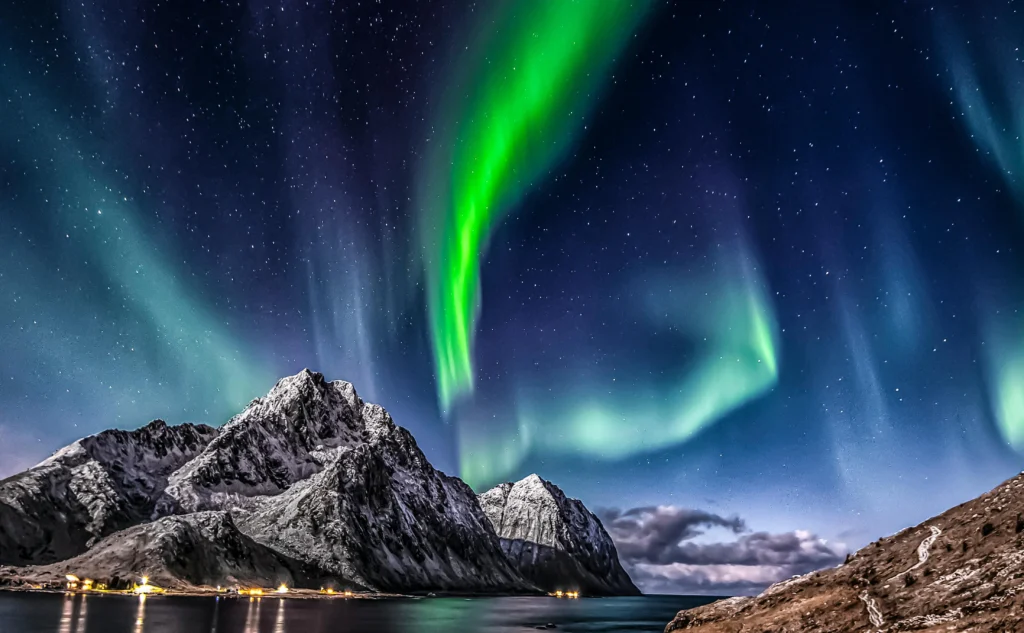
Depending on when you visit, the sky itself becomes part of the adventure.
- Summer (May–July): The sun never sets. You’ll find yourself hiking at 11 p.m. or paddleboarding under a golden sky.
- Winter (Sept–April): The aurora borealis shows up like a celestial dance party. There’s no light pollution here — only the silence of snow and starlight.
Timeless Fishing Villages

- Reine: Perhaps the most photogenic village in Norway — red cabins, towering peaks, and glassy water.
- Henningsvær: The “Venice of the North,” strung together by causeways and known for its football field perched on a rocky islet.
- Nusfjord: A UNESCO-protected fishing hamlet where time hasn’t moved much since the 1800s.
Top Things to Do in the Lofoten Islands
1. Hike Ryten & Kvalvika Beach
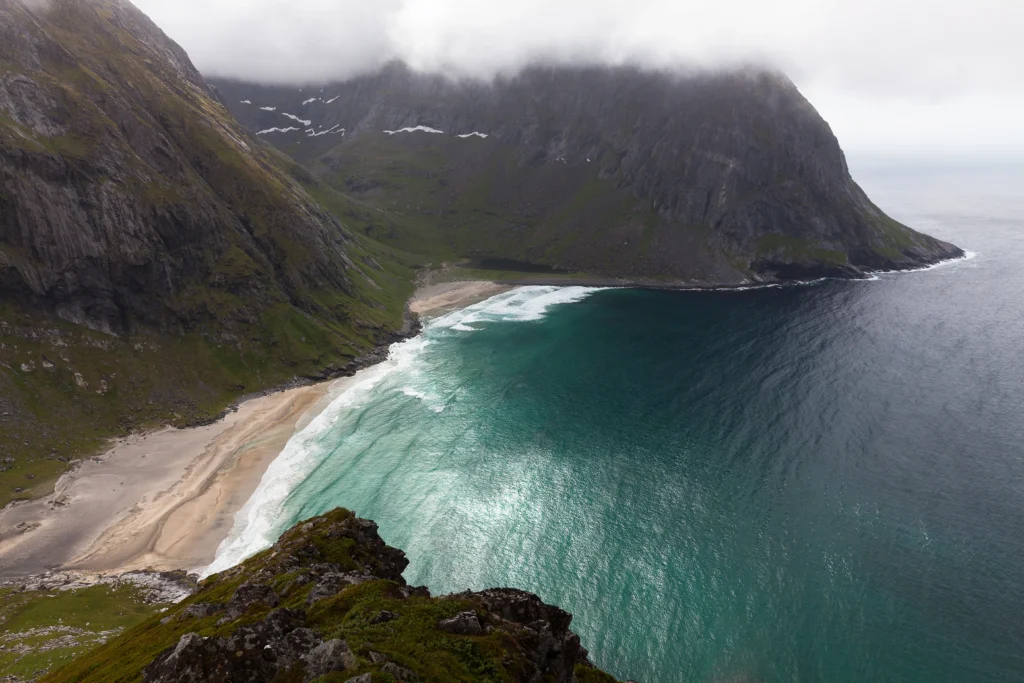
This combo hike gives you the best of both worlds, dramatic clifftop views of turquoise bays and a hidden Arctic beach below. The contrast between snow-capped cliffs and golden sand feels like something from Iceland, Patagonia, and Hawaii, all in one.
2. Try Arctic Cod Fishing
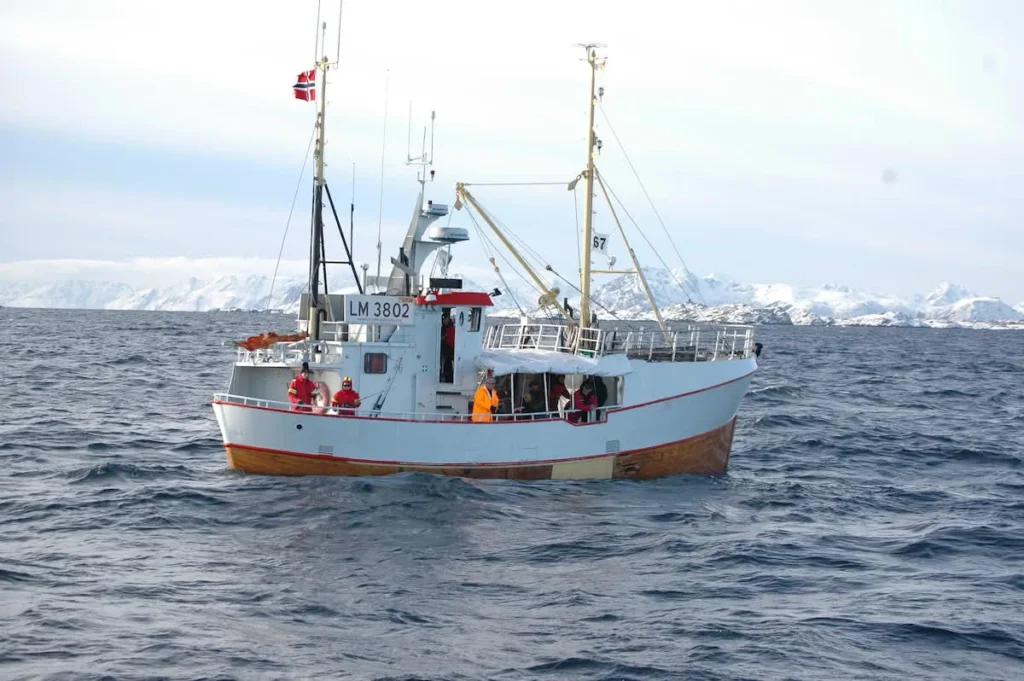
Lofoten lives and breathes fishing. Join a local on a traditional boat to catch skrei cod, then grill it at your rorbu. Winter is the best time for this, when the cod migrate by the millions.
3. Kayak Through Reinefjord
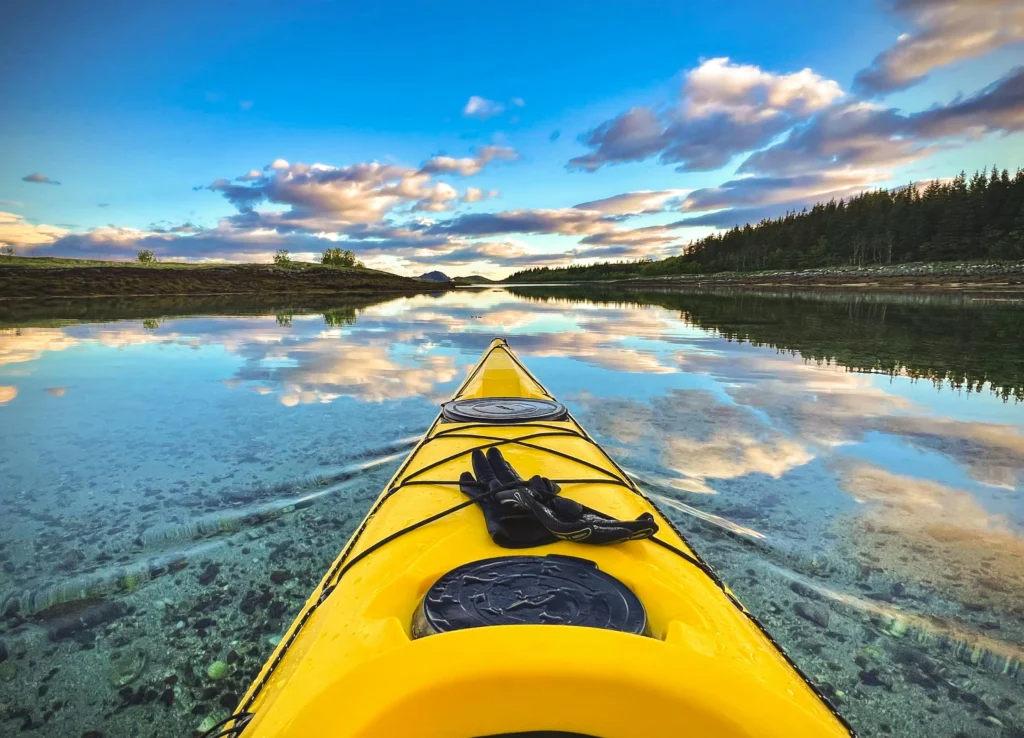
Still, emerald waters. No engine sounds. Just your paddle slicing the silence between cliff faces and sea eagles circling above. It’s meditation, with a bit of frostbite.
4. Chase the Northern Lights
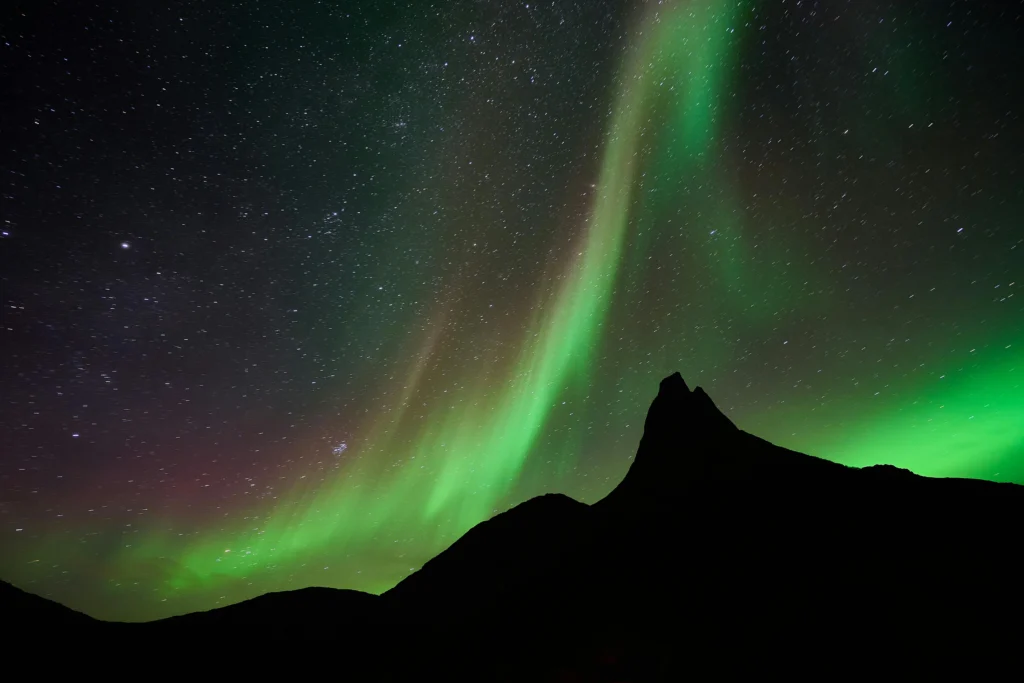
In winter, you don’t even need to leave your cabin. But for a more dramatic show, head out to Unstad Beach or Eggum, far from artificial light, and watch the green ribbons swirl.
5. Eat Like a Viking

Try dried stockfish (unsalted cod) hanging from giant wooden racks, a Lofoten specialty. Or sit down to a steaming bowl of klippfisk stew with root vegetables and sour cream.
Getting There
- Fly into Evenes Airport (EVE) or Leknes (LKN) from Oslo or Tromsø.
- Rent a car — it’s the only way to truly explore the islands.
- Trains don’t reach this far, and buses are infrequent. Self-driving is key to freedom here.
Best Time to Visit Lofoten islands
- Summer (June–August): Perfect for hiking, kayaking, and 24-hour light
- Winter (February–March): Best for aurora, snowshoeing, photography, and cod fishing
- Shoulder Seasons (April–May / Sept–Oct): Fewer tourists, cheaper rates, unpredictable but magical light
Pro Tips
- Bring layers — even in summer, it can snow.
- Don’t rely solely on Wi-Fi or phone signal — download offline maps.
- Respect the landscape — it’s a fragile Arctic ecosystem. Pack out all waste.
- Book early — Lofoten gets busier every year, especially Reine.
Final Thought: A Place That Humbles You
There are destinations that dazzle. And then there’s Lofoten — a place that humbles you. It strips away the noise of modern life and replaces it with the crash of waves, the crunch of snow, and the silence between northern lights pulses.
It’s the kind of destination that doesn’t just give you memories — it gives you perspective.
Come for the scenery. Stay for the solitude. Leave with something bigger than you brought.


